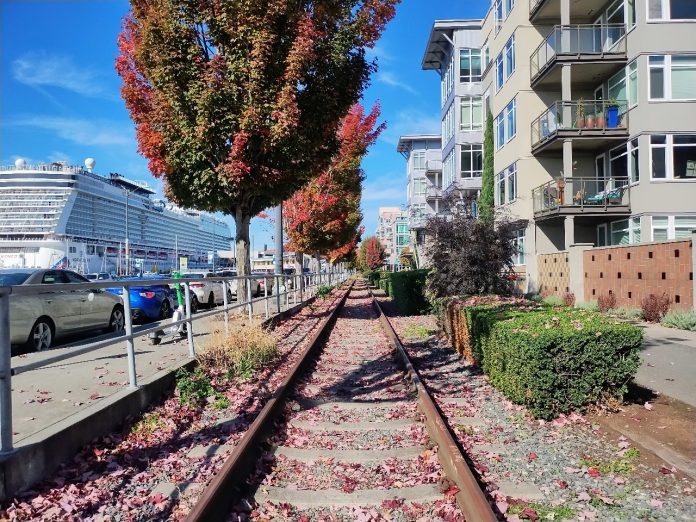
Elliott Bay Connections, the public-private partnership created to upgrade Seattle’s waterfront trail in North Downtown, has finalized its design and is heading toward construction. Funded by private donors including Melinda French Gates, MacKenzie Scott, and Expedia, the improvements are intended to be an additional capstone to the long-planned revamp of Seattle’s central waterfront and open before the city hosts the FIFA Men’s World Cup in mid-2026.
The project consists of two main parts: a multi-use trail for people walking and biking between downtown and the existing Elliott Bay Trail, and upgrades to Myrtle Edwards Park and the Port of Seattle-owned Centennial Park next door, including path and beach upgrades and a new amenity building that will include public restrooms. No public dollars are being used to fund the upgrades, and has been framed as completing pieces of the waterfront project that were left unfinished by the decade-long Waterfront Seattle project.
“We are not just opening park spaces, but we’re really opening a whole new set of experiences and places in our city, and a whole new way to experience terrific places that have existed for decades, if not longer, and new spaces and opportunities and experiences that will be afforded to us when these improvements from Smith Cove down to Pioneer Square are complete,” Jon Scholes, President and CEO of the Downtown Seattle Association (DSA) said during a presentation of the final design last week.
DSA is acting as the project implementation partner for Elliott Bay Connections, a liaison between the City, the Port, and the project’s donors.
“So this is a tremendous investment that’s being made in our city, and we’re certainly grateful for the philanthropic leaders that have come forward to make it and the team that is working to carry it out,” Scholes said.
The planned “greenway” is a wide trail planned along the former waterfront streetcar right-of-way on Alaskan Way, separate from the Seattle Department of Transportation (SDOT) project across the street to build a two-way protected bike lane that will connect the Elliott Bay Trail and the new cycletrack along the central waterfront. That project is also set to start construction in the coming months. The greenway will run along the east side of the street and feature an 11-foot path, along with public seating.
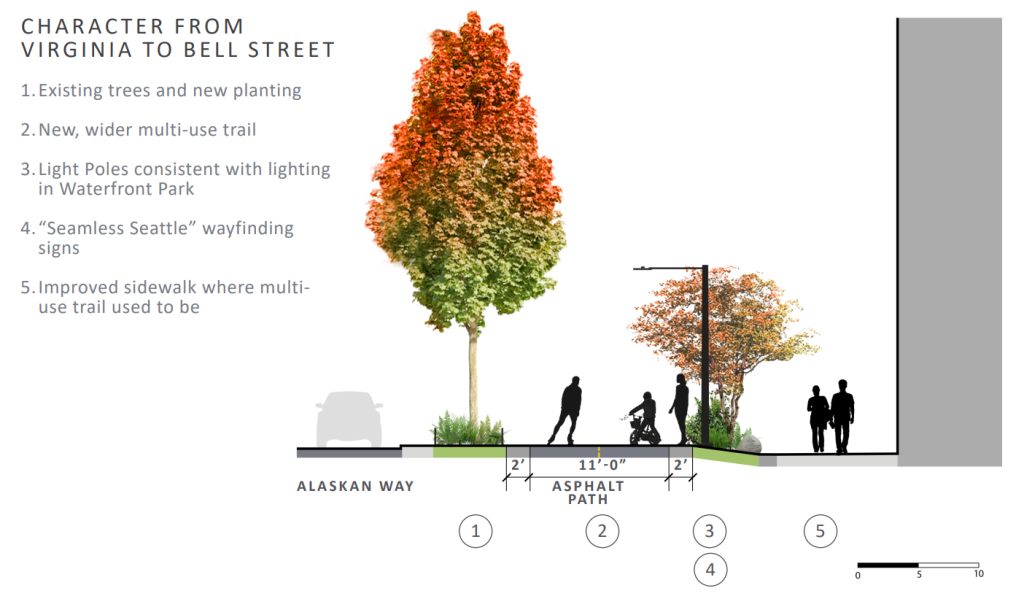
Adding another wide path heading north from Downtown will definitely reduce crowding during the busiest months of the year, especially during cruise season when the protected bike lane along Alaskan Way is closed to allow ships to load and unload. But the greenway trail includes a big design limitation, one that echoes design choices for the bike trail along the central waterfront.
The trail won’t fully connect to anything, with no walkway planned for the block between Clay Street and Broad Street. Instead, anyone wanting to continue north to the Elliott Bay Trail will need to cross the street at Clay Street and cross to either the protected bike lane or sidewalk across the street. This design choice was attributed to the complexity of the Broad Street and Alaskan Way intersection, with its busy railroad crossing and high volumes of turning traffic.
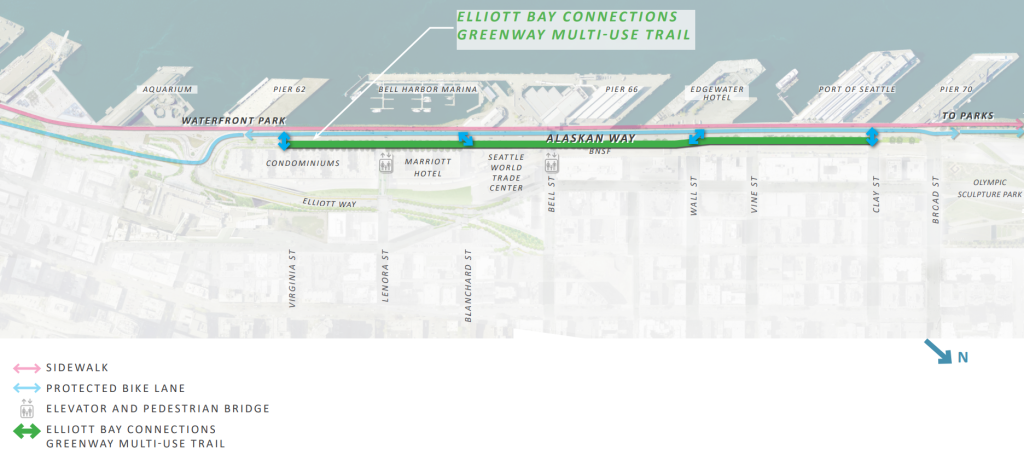
“In this case, what we’ve chosen to do is end the greenway at Clay [Street] where we can provide a safe and very visible street crossing over to the other side of the street to continue on the Elliott Bay Trail as it moves north,” Lara Rose of Walker Macy, the landscape architecture firm that is acting as project’s prime consultant, said last week.
As it stands, the new trail will surely prove popular with waterfront visitors looking for space to spread out, but the missing gap proves the high utility of the SDOT-funded bike lane across the street, which was almost constructed with a permanent detour around Pier 66 until community outcry prompted a compromise.
Upgrades in Myrtle Edwards and Centennial Parks
Some of the biggest wins from the Elliott Bay Connections project will be coming in Myrtle Edwards Park and its northern counterpart, Centennial Park. The pedestrian path, which hugs the shoreline, will be getting a refresh that makes it wider to accommodate additional traffic. The small beach near the Thomas Street pedestrian overpass into Uptown will be doubling in size, becoming a much more attractive amenity for visitors and becoming a north end compliment to the Pioneer Square Habitat Beach, which opened in 2023.
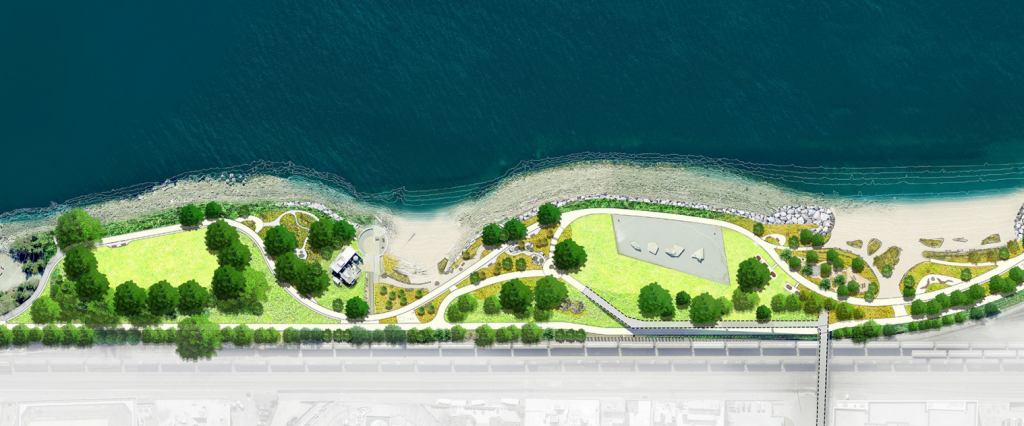
In Centennial Park, paths are also getting a refresh and the main upgrade will be a brand new amenity building with restrooms, a concession stand, and a fair amount of new seating.
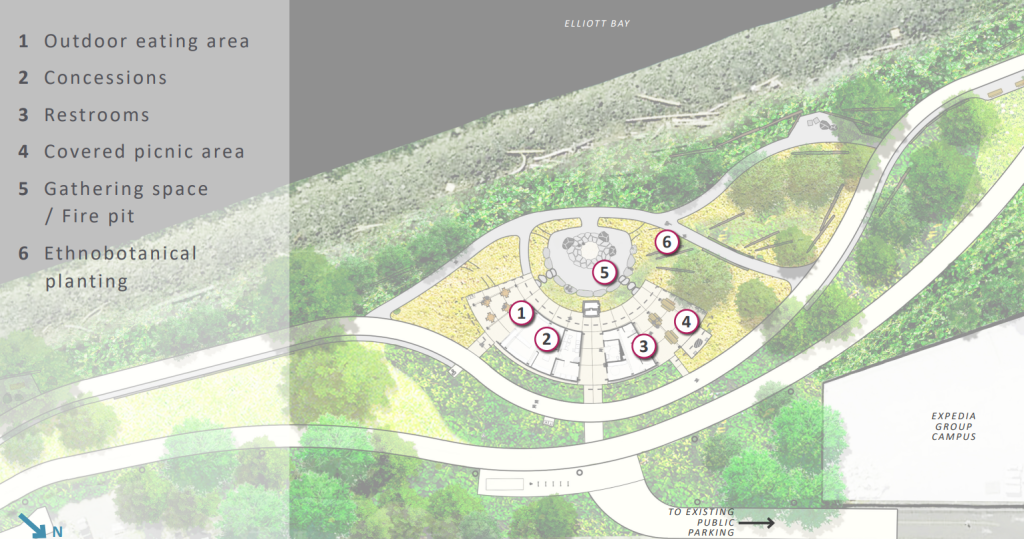
While public comment was strongly in favor of the public restrooms being placed in Myrtle Edwards, which sees more visitors than Centennial, adding them there would have required much more extensive infrastructure improvements given the fact that the park doesn’t currently have any water service. In Centennial Park, the amenity building will replace the shuttered concession stand near the fishing pier, which is also closed presently, but set to be upgraded and reopened by the Port of Seattle.
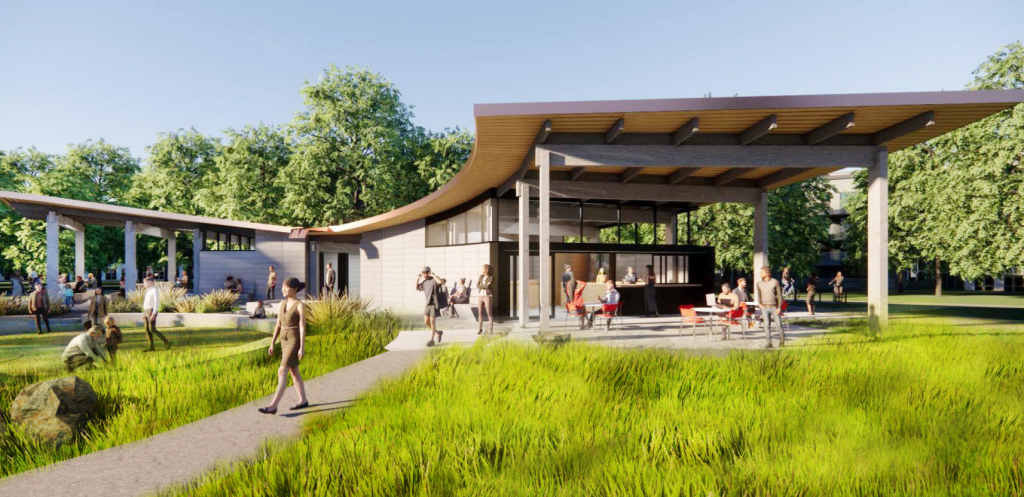
The project also includes a focus on adding wayfinding, art, and upgrading the existing landscaping with new native plants. Upgrades to the lawns include spaces designed for active use but other spots that are intended to encourage pollinators.
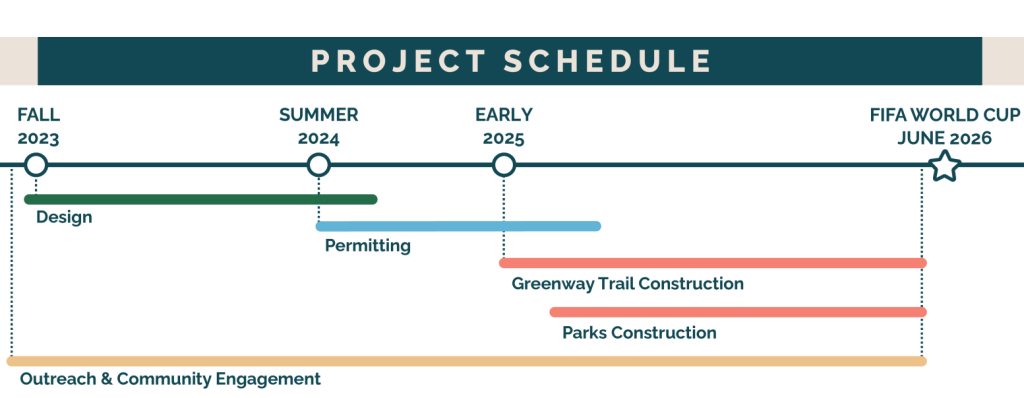
The Elliott Bay Connections project is set to start construction at the beginning of 2025 and wrap up shortly before crowds start to arrive in Seattle for the 2026 FIFA World Cup.
Correction: An earlier draft incorrectly stated that the greenway would be on the west side of the street rather than the east side.
Ryan Packer has been writing for The Urbanist since 2015, and currently reports full-time as Contributing Editor. Their beats are transportation, land use, public space, traffic safety, and obscure community meetings. Packer has also reported for other regional outlets including BikePortland, Seattle Met, and PubliCola. They live in the Capitol Hill neighborhood of Seattle.

